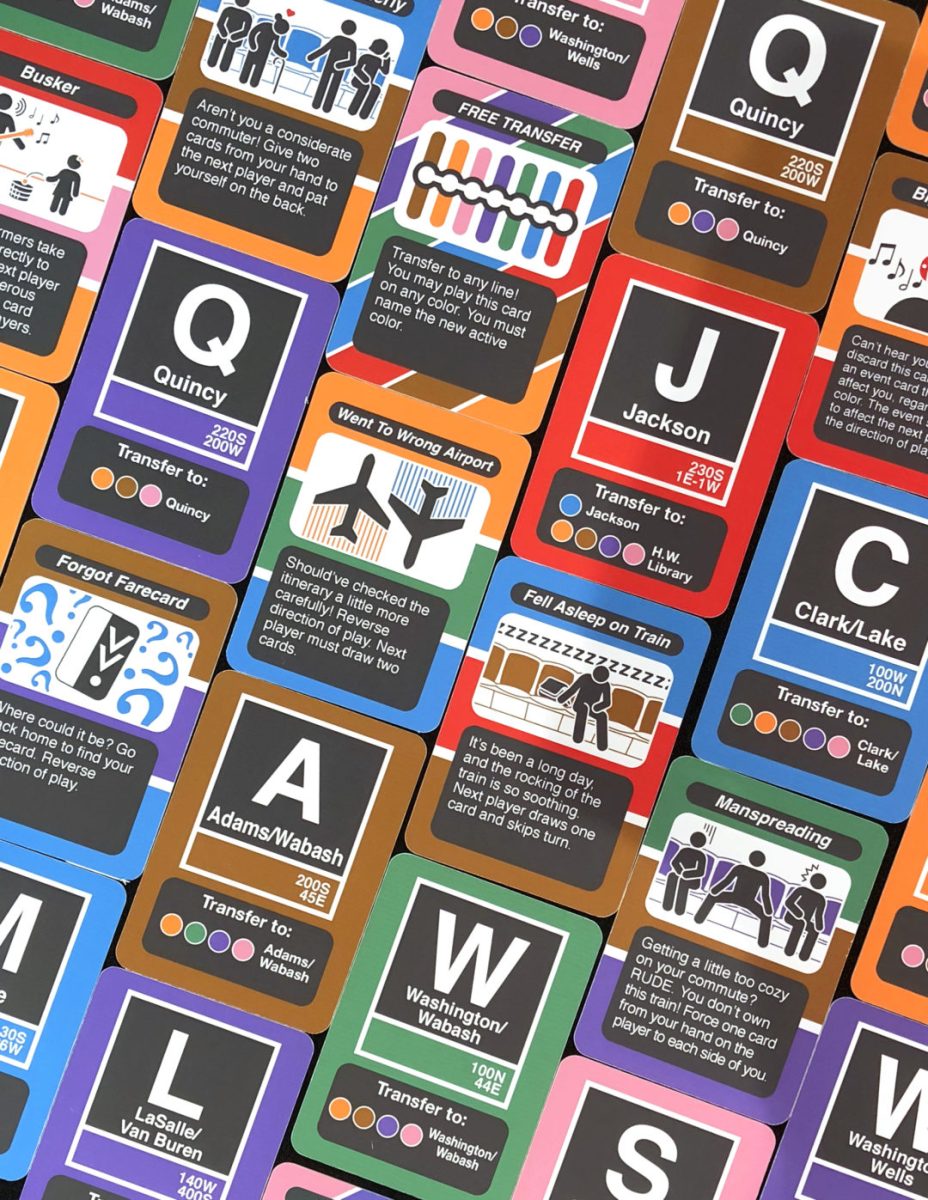Living in Chicago exposes you to plenty of ads that were clearly developed by agencies in New York or Los Angeles desperate to make the content feel localized. Obvious pitfalls abound, like overly emphasizing cliches about the Windy City like our namesake styles of hot dogs and pizza, and there are more subtle traps like discussing roads without using the local colloquial names for them.
One of my favorite examples came so close to perfection, mocking Chicago’s byzantine parking laws and obsession with artisan doughnuts. But it exposed itself by having someone in the ad ask why another person drove instead of taking the Red Line, the North-South train that connects most of the city. Anyone who actually lives here wouldn’t have to ask.
For everyone else, there’s Loop: The Elevated Card Game. Designed in Chicago by Transit Tees, the casual game for two to seven players gives you a taste of the city’s public transit experience. The game is named for the Loop, the downtown business district where all of Chicago’s train lines come together, and most of the cards represent stops along one of the seven lines. Gameplay is similar to Uno in that players want to be the first one to empty their hand by playing cards that match the color of the previous card, indicating they are part of the same line, or have the same station name, indicating that they can change lines. A train map is included with a game to give you a feel for how this works if you don’t have direct experience.
Aside from adding a connection between the Red and Blue lines, Loop stays pretty true to the way Chicago’s train network actually functions. For instance the Red, Blue and Green lines have fewer stops in the Loop than the Purple, Green, Pink or Brown lines so there are fewer cards of those colors. That creates more strategy than Uno, though you can also out think yourself: One player used a Free Transfer card (Loop’s version of a Wild card) to pick an obscure color she didn’t actually have expecting to just screw with people by making them draw cards. She wound up getting caught in her own trap when no one changed the color before her turn arrived again.
The real fun of the game comes from its 17 event cards. Each can only be played on a few different colors. That makes sense for some like “Went To Wrong Airport” that can be used on the Orange Line or Blue Line which go to Chicago’s Midway and O’Hare airports respectively. That inconvenience reverses the order of play and forces the next player to draw two cards. Others are the sort of thing that could realistically happen on any of Chicago’s lines or really in any major city like “Train Car Preacher” where the player is encouraged to give the other players a lecture on anything from commuter etiquette to public courtesy, annoying them until they all draw a card from a deck. Appropriately the card “Big Headphones” can be used to ignore this nuisance. That’s not always the case in the real world. One of my friends shared a story where he was on the Blue Line when a fellow rider waved at him until he took off his headphones, then chatted with him briefly. Just like it seemed like the interaction wouldn’t go as bad as feared, the stranger started taking off his pants.
Each event card is unique and got a giggle out of us every time with a combination of art and descriptive scenarios that are all too familiar like the dreaded “Sat in Puddle” which forces the next player to “draw four cards and consider going home for a clean pair of pants.” Because of the restrictions on when you can play cards and who you can target, Loop is less spiteful than some competitive games. Interactive elements add to the charm like “Accidental Intercom Press,” where you have to apologize as you swap hands with another player.
The gags would likely get old after a while but Loop is about the size of a standard deck of cards so it’s easy to carry with you anywhere and introduce it to new players. It takes about 10-20 minutes to play and almost no time to learn making it a nice palate cleanser between more complicated games. You can also use it to chill out at the end of a longer gaming session and let everyone brace themselves for their train rides home.






Published: Mar 4, 2019 04:00 pm